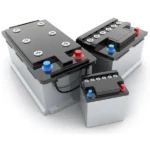Small business owners waste an average of 3-4 hours weekly on manual note-taking and meeting documentation, translating to over 150 hours annually that could drive revenue instead. This inefficiency creates a cascade of problems: missed action items, unclear responsibilities, and delayed decision implementation. When managers juggle facilitation with frantic scribbling, meeting quality suffers dramatically. Voice recorder transcription technology offers a powerful solution to this productivity drain. Modern AI-powered tools can automatically convert spoken discussions into accurate, searchable meeting minutes within minutes of conclusion. Small business owners and managers who implement audio transcription solutions typically recover 60-80% of time previously lost to manual documentation while achieving superior accuracy and accountability. This transformation allows teams to focus entirely on strategic discussions rather than administrative burdens, creating competitive advantages through enhanced operational efficiency and faster execution of critical business decisions.
The Hidden Costs of Manual Meeting Documentation
Research reveals that small business managers spend approximately 45 minutes per meeting on documentation tasks, with companies averaging 8-12 meetings weekly. This translates to 6-9 hours of pure administrative overhead that generates zero revenue. Beyond time costs, manual note-taking introduces a 23% error rate in capturing critical decisions and action items, leading to project delays and miscommunication. The cognitive burden of simultaneously facilitating discussions while documenting creates significant stress for managers, often resulting in either poor meeting leadership or incomplete records. When key decisions are missed or misinterpreted, teams waste additional hours in follow-up meetings to clarify responsibilities. The financial impact compounds quickly: a 10-person company losing 8 hours weekly to documentation inefficiencies sacrifices $20,000+ annually in productive capacity, assuming conservative hourly rates. This hidden productivity drain prevents small businesses from scaling effectively and responding quickly to market opportunities.
How Voice Recorder Transcription Technology Works
Voice recorder transcription leverages advanced artificial intelligence and natural language processing to convert spoken words into written text with remarkable accuracy. Modern AI speech recognition systems analyze audio frequencies, identify phonetic patterns, and apply contextual understanding to produce coherent transcripts. The technology has evolved dramatically from early analog dictation machines requiring human typists to sophisticated cloud-based platforms that process audio in real-time. When you record a meeting, the audio file uploads to secure cloud servers where powerful algorithms break down speech patterns, distinguish between speakers, and apply machine learning models trained on millions of hours of conversation data. Real-time transcription provides instant text during meetings, enabling immediate clarification and note-taking, while post-meeting processing offers higher accuracy through multiple analysis passes. Advanced systems employ speaker diarization to identify who said what, while noise reduction algorithms filter background sounds for cleaner transcription. Security protocols include end-to-end encryption, data anonymization, and compliance with business privacy standards, ensuring sensitive discussions remain protected throughout the transcription process.
Transformative Benefits of Automated Meeting Minutes
Time Recovery and Productivity Boost
Small businesses implementing voice transcription recover an average of 15-20 hours monthly previously lost to manual documentation. A Denver marketing agency discovered they reclaimed 18 hours weekly across their team after adopting automated meeting minutes, equivalent to hiring an additional part-time employee. These recovered hours redirect toward client acquisition, strategic planning, and revenue-generating activities that directly impact bottom-line growth.
Accuracy and Compliance Advantages
Automated transcription eliminates the 23% error rate inherent in human note-taking, ensuring critical decisions and deadlines are captured verbatim. This creates reliable audit trails for legal protection during disputes or compliance reviews. Version control features track changes to action items, providing clear accountability chains that protect businesses from miscommunication-related liabilities.
Enhanced Meeting Engagement
When participants know conversations are being accurately recorded, they engage more thoughtfully in discussions rather than frantically scribbling notes. Real-time transcription enables immediate clarification of complex points during meetings. Post-meeting verbatim records eliminate the “I never said that” syndrome, creating unprecedented accountability that drives faster project completion and clearer responsibility assignment.
Key Features in Voice Recorder Transcription Tools
Modern voice recorder transcription platforms offer speaker identification capabilities that distinguish between multiple participants, automatically labeling who said what throughout meetings. This eliminates confusion when reviewing decisions and assigning responsibilities weeks later. Seamless integration with calendar applications like Outlook and Google Calendar enables automatic meeting scheduling and transcription triggers, streamlining workflow without manual intervention. Cross-platform accessibility ensures teams can access meeting records from mobile devices during travel or desktop computers in the office, maintaining productivity regardless of location. Custom vocabulary features allow businesses to train AI systems on industry-specific terminology, technical jargon, and company acronyms, significantly improving transcription accuracy for specialized discussions. Platforms like Owll AI provide export functionality with multiple format options including PDF reports for formal documentation, Google Docs for collaborative editing, and direct email distribution for immediate sharing with stakeholders. Advanced search capabilities enable users to quickly locate specific topics, decisions, or action items across months of meeting archives. Real-time collaboration features allow team members to add comments, corrections, and additional context directly within transcripts, creating comprehensive meeting documentation that serves as reliable reference material for future strategic planning and accountability tracking.
Implementing Meeting Automation: Step-by-Step Guide
Step 1 requires configuring your chosen transcription tool before meetings begin. Download the application, create business accounts with appropriate security settings, and test audio quality in your typical meeting environment. Step 2 focuses on recording best practices: position devices 3-6 feet from speakers, minimize background noise by closing doors and silencing notifications, and ensure stable internet connectivity for cloud-based processing. Step 3 involves processing recordings immediately after meetings conclude. Most AI platforms generate initial transcripts within 5-10 minutes, providing instant meeting summaries while discussions remain fresh in participants’ minds. Step 4 requires human oversight to edit AI-generated minutes for accuracy. Review speaker identification, correct technical terminology, and add contextual notes that clarify complex decisions or action items. This editing phase typically requires 10-15 minutes compared to hours of manual documentation. Step 5 establishes distribution and storage protocols that ensure meeting records reach relevant stakeholders promptly. Create standardized email templates for transcript distribution, establish cloud storage folders organized by project or date, and implement retention policies that comply with business record-keeping requirements while maintaining easy searchability for future reference.
Choosing Your Small Business Transcription Solution
Budget considerations play a crucial role in transcription tool selection, with freemium options offering basic functionality for startups while premium solutions provide advanced features like speaker identification and integration capabilities that justify higher costs through productivity gains. Scalability becomes essential as growing teams require multi-user access, increased storage capacity, and enterprise-grade security features that accommodate expanding meeting volumes. Security compliance requirements vary by industry, with healthcare businesses needing HIPAA-compliant platforms while European companies must ensure GDPR adherence for data protection. Integration capabilities determine workflow efficiency, prioritizing tools that seamlessly connect with existing calendar systems, project management platforms, and communication channels your team already uses daily. Solutions like Owll AI offer comprehensive feature sets that address these requirements while maintaining user-friendly interfaces suitable for small business teams. Create a vendor comparison checklist evaluating transcription accuracy rates, processing speed, customer support quality, and contract flexibility to make informed decisions that align with your specific business requirements.
Revolutionizing Business Efficiency Through AI-Powered Meeting Documentation
Manual meeting documentation represents a silent productivity killer that drains 150+ hours annually from small business operations while introducing costly errors and missed opportunities. The evidence is overwhelming: companies lose thousands of dollars in productive capacity to administrative overhead that generates zero revenue. Voice recorder transcription technology eliminates these inefficiencies by automating meeting minutes with superior accuracy, creating searchable archives, and freeing managers to focus on strategic leadership rather than frantic note-taking. The transformation extends beyond time savings to enhanced accountability, legal protection through audit trails, and improved team engagement during critical discussions. Early adopters gain significant competitive advantages through faster decision implementation, clearer responsibility assignment, and the ability to redirect recovered hours toward client acquisition and business growth. The technology has matured to offer enterprise-grade security, seamless workflow integration, and affordable pricing that makes implementation accessible for businesses of all sizes. Small business owners who continue relying on manual documentation risk falling behind competitors who leverage automation for operational excellence. Start your transcription transformation today by evaluating available platforms, testing solutions with your team, and implementing automated meeting minutes that will revolutionize your business efficiency and accelerate growth trajectory.


